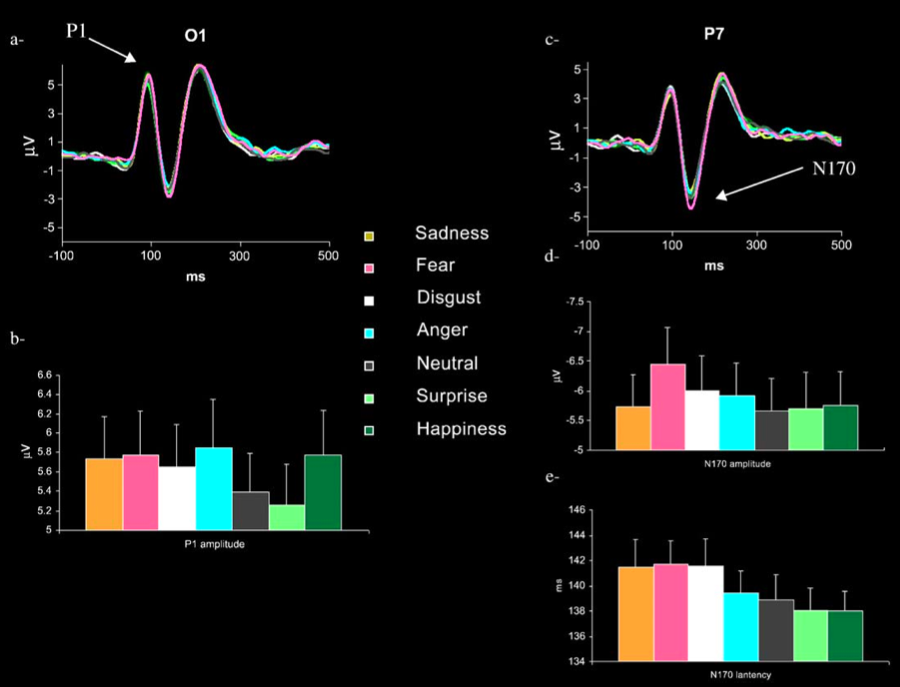Is it perceptual?
Maybe for fear & happiness
- ERP (Campanella et al 2002)
- visual search : behavioural (Williams et al 2005)
But are any of the processes that categorise stimuli by expression of emotion perceptual?
%That is, are the observed abilities to discriminate expressions of emotion ever based on perceptual processes?
Answering this question is complicated by the fact that many parts of the brain are involved \citep{adolphs:2002_recognizing,vuilleumier:2007_distributed}.
There is evidence that both the amygdala \citep{harris:2012_morphing,harris:2014_dynamic} and also some cortical structures \citep{batty:2003_early}
respond categorically to expressions of emotion;
and that intervening in the operations of the somatosensory cortex can impair categorisation (\citealp{pitcher:2008_transcranial}; see also \citealp{banissy:2011_superior}).
To my knowledge, so far it is only for happy and fearful stimuli that we have direct evidence
from both neurophysiological \citep{Campanella:2002aa} and behavioural measures \citep{williams:2005_looka}
of categorisation occurring in perceptual processing.
So while the evidence is not conclusive,
there is converging evidence that some perceptual processes categorise stimuli including faces by expression of emotion.
Humans may have categorical perception not only for speech, colour, orientation and other properties but also for expressions of emotion.
What do I mean by perceptual here?
Distinguish perceptual process vs. perceptual experience.
I suppose that perceptual experience of emotions or their expressions
requires that there are perceptual processes which carry information
about them. (Note that not everyone would agree with this; many appear
to think that claims about perceptual experience float free of claims about
the psychology and neurophysiology of perception.)
What exactly is the evidence?
(Never trust a philosopher on science.)
An ERP is an event-related potential; it is a recognisable electorophysiological
signal, measured by, for instance, EEG, that is associated with a particular
neurological process.
For instance, there are ERPs associated with aspects of inhibitory control.
‘The higher amplitude of the N170/VPP for the second face of between pairs
as compared to within and same pairs can be understood when that subjects
are confronted with two faces (in between pairs) perceived as different
expressions (happiness and fear) by the perceptual system.’
‘The higher amplitude of the N170/VPP for the second face of between pairs as compared to within and same pairs can be understood [... thus:]subjects are confronted with two faces (in between pairs) perceived as different expressions (happiness and fear) by the perceptual system.’
\citep[p.~219]{Campanella:2002aa}
What does the N170 have to do with the perceptual system?
‘The N170/VPP is considered as the process indexing the structural analysis of facial information in order to obtain a configurational face representation (Jeffreys, 1996)’
\citep[p.~219]{Campanella:2002aa}
N170 / VPP is a marker of face processing generally; so if you think that is
perceptual, then the presence of the N170/VPP here gives
you a reason to think that categorical perception of expressions
of emotion is perceptual too.
Campanella et al (2002, 219)
‘visual search was more efficient when the targets displayed emotional rather than neutral expressions’
\citep[p.~46]{williams:2005_looka}
Williams et al (2005, 46)










